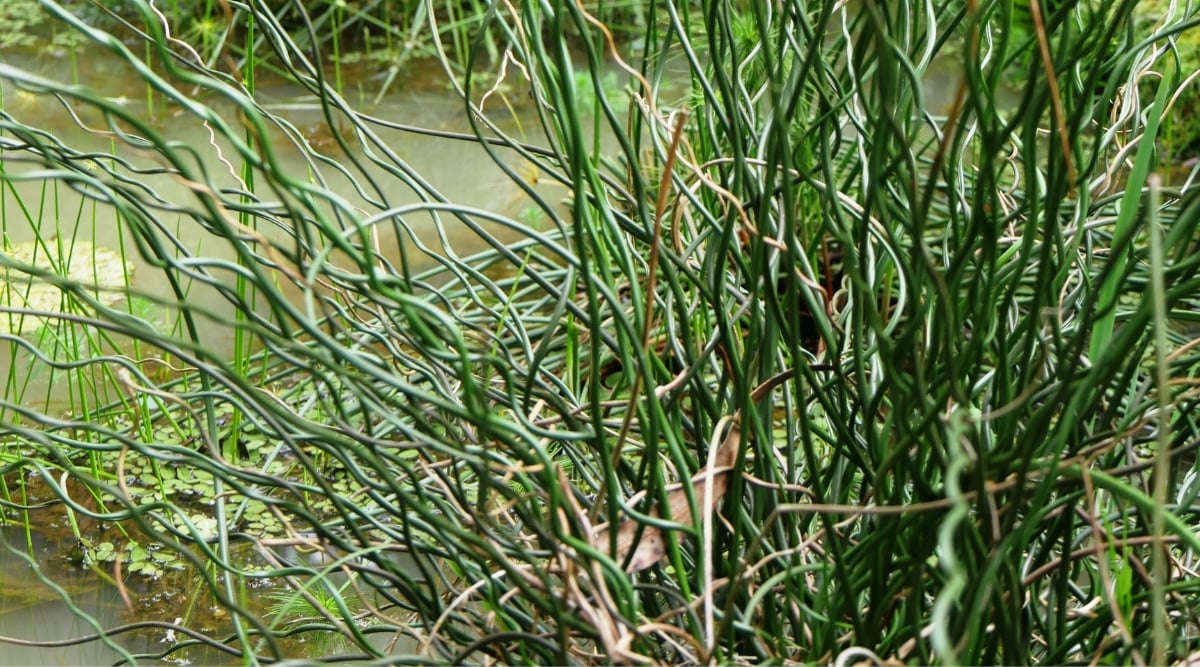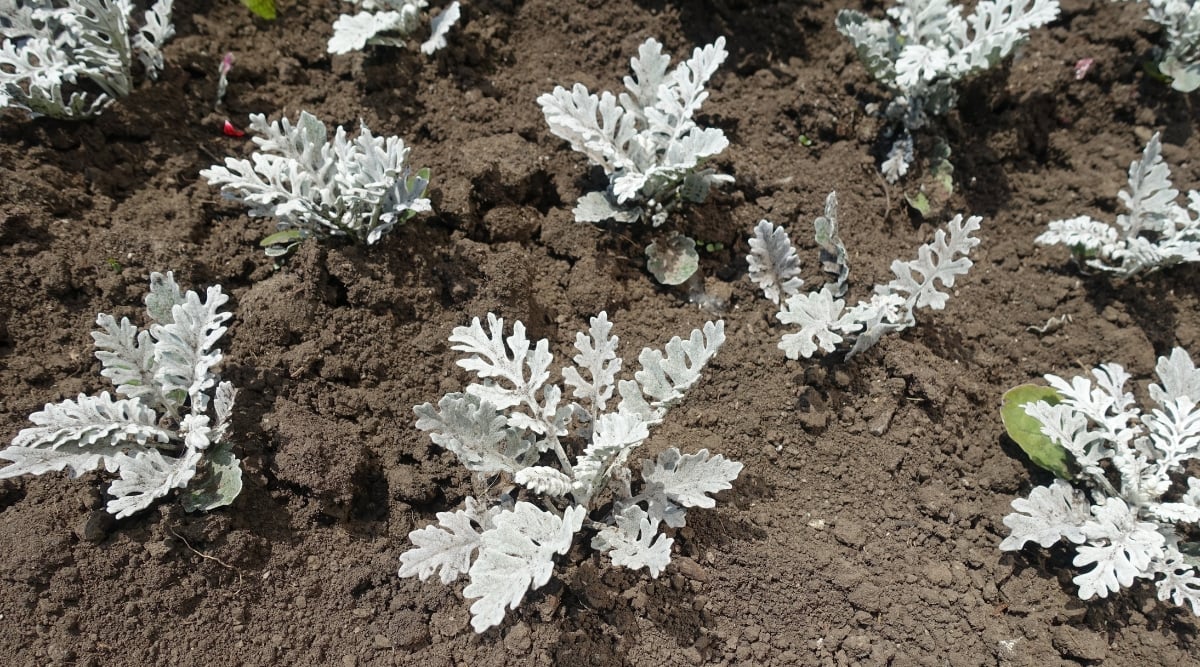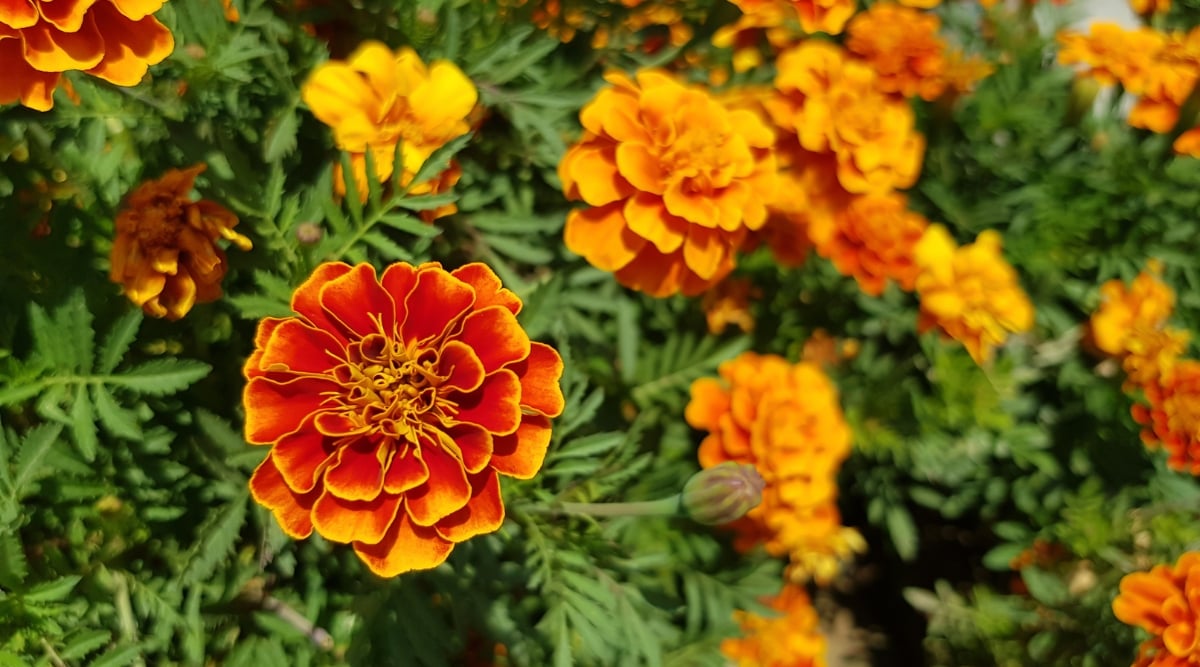Get Your Garden Halloween Ready With These 15 Easy Annuals
Are you looking to up the spook in your garden this Halloween? In this article, gardening expert Jill Drago lists 15 annuals that are equally spooky and easy to grow.

Contents
Annuals are often regarded as additions to our spring or summer gardens, but did you know you can also add annuals to your fall gardens? Swapping some of your summer annuals out for fall annuals is one of the easiest ways to get your garden ready for Halloween and the rest of the fall season.
Halloween, falling on October 31st of each year, is a holiday filled with warm autumnal colors, spooky characters, and jewel-toned hues. Jazzing up your garden with kooky plants for this holiday is easy and fun!
Below are 15 easy-to-care-for annuals in spooky colors perfect for your Halloween garden.
Celosia

|
|
botanical name Celospa spp. |
|---|---|
|
|
sun requirements Full sun |
|
|
height 1-4 feet |
|
|
hardiness zones 2-11 as an annual |
Celosia and cockscomb produce unique flowers that almost have a velvety feel. While celosia produces more of a plume-like bloom, cockscomb produces a beautiful wavy and curled flower that looks like a brain, making it a great choice for a Halloween-themed garden.
Celosia and cockscomb are great choices for your summer beds, too. However, you may want to refresh them for the fall.
Try ‘Twisted Orange’. The orange blossoms are right on point for this holiday. However, if you prefer more of a plume flower, the ‘Pampas Plume’ blend will bloom in varied fall colors, such as red, orange, pink, and yellow.
Chrysanthemum

|
|
botanical name Chrysanthemum spp. |
|---|---|
|
|
sun requirements Full sun |
|
|
height 1-2 feet |
|
|
hardiness zones 5-9 |
Potted mums are the classic fall plant. While they may grow perennially in your area, the potted mums you grab from the garden centers in September have been grown in hot houses and will most likely not be winter hardy.
These plants produce pom-poms of flowers on top of fern-like green leaves. If you would prefer to grow a perennial mum, garden mums are available, as are perennial asters. These plants provide the same autumnal splash of color with season-long foliage tolerant of the summer heat.
You can purchase mums in just about every color imaginable. To up your Halloween game, select an orange variety such as ‘Gigi’ or ‘Autumn Sunset.’ Plant your mums in your flower beds, containers, or window boxes for a quick fall fix for your gardens.
Coleus

|
|
botanical name Coleus scutellarioides |
|---|---|
|
|
sun requirements Partial to full shade |
|
|
height 1-3 feet tall |
|
|
hardiness zones 10-11, grown as an annual elsewhere |
Prized for its beautifully colorful foliage, coleus is a great addition to summer and fall gardens. Depending on your chosen variety, coleus can reach up to 3 feet tall.
When your coleus begins to produce flowers, pinch them off to promote more foliar growth. This pretty annual grows very nicely in flower beds, but is also very useful in containers where you may need a thriller or a filler.
‘Chocolate Drop’ coleus has rounded green leaves with a deep crimson center that is nearly black, giving the appearance of a spider web. If you want to add some orange to your fall garden, try ‘Wicked Hot’ or ‘Sedona Sunset.’ Each of these varieties has a rusty orange color and will grow 2-3 feet tall.
Corkscrew Rush

|
|
botanical name Juncus effusus |
|---|---|
|
|
sun requirements Full sun to partial shade |
|
|
height 1-2 feet |
|
|
hardiness zones 5-9 |
While rush is not technically an annual, ‘Curly Wurly’ is usually used and grown as an annual in containers and window boxes. This grass looks like you took a curling iron to your otherwise rigidly straight rush.
Corkscrew rush loves very wet soil and grows nicely in water gardens. Add a few purple and orange lights nearby to set the mood for a perfectly spooky pond.
Adding this to your window boxes for a whimsical wickedness that reminds me of a witch’s broom. Pair corkscrew rush with mums or coleus, or grow it on its own and add some pumpkins for a pop of color.
Dahlia

|
|
botanical name Dahlia spp. |
|---|---|
|
|
sun requirements Full sun |
|
|
height 1-4 feet |
|
|
hardiness zones 8-11, grown as an annual elsewhere |
With many different dahlias, finding a variety that suits your Halloween needs is easy. These stunning flowers are grown from bulbs planted in the spring or early summer, depending on where you live.
You can also purchase mature, blooming dahlias from your local garden center. While dahlias begin blooming in the summertime, they will last well into the fall.
The ‘Show n’ Tell’ dahlia is a dinner plate variety that produces reddish-orange flowers with yellow tips. The ‘Scura’ dahlia has dark purple, nearly black stems and anemone-style orange flowers that would be perfect for a sweet, not spooky Halloween garden. Before the frost, dig your bulbs up and keep them dry so you can plant them again next year.
Dusty Miller

|
|
botanical name Jacobaea maritima |
|---|---|
|
|
sun requirements Full sun to partial shade |
|
|
height 6 inches to 2 feet tall |
|
|
hardiness zones 8-11, grown as an annual elsewhere |
Dusty Miller is a classic bedding annual known for its soft grey foliage. You can pair this annual with just about any plant, and it will blend nicely.
Are you seeking something with a hint of mystery or a smoky feel? Dusty Miller is the perfect plant for this!
Plant ‘Silver Dust’ by seed or purchase a few 6-packs from your local garden center. Add it to any spot in your garden where you need some freshening for fall.
This annual can grow up to two feet tall and reach widths of one foot, but if you install this plant in the fall, it will likely stay small. This makes it easy to tuck it into your existing containers.
Flowering Kale

|
|
botanical name Brassica oleracea |
|---|---|
|
|
sun requirements Full sun |
|
|
height 1 foot |
|
|
hardiness zones 10-11, grown as an annual elsewhere |
Adding flowering kale to your garden is one of the easiest ways to take flower beds and containers from summer to fall. These frilly kale plants pair nicely with anything growing in your gardens.
Whether mums or perennials such as hydrangeas or cone flowers, flowering kale provides a really pretty foliar accent to your gardens. These plants can grow in your flower beds, but you may get more out of them if you grow them in containers.
Try ‘Peacock Red’ flowering kale for your Halloween gardens. This variety has dark purple outer leaves with a purple center. Combine this purple kale with orange flowers, like Superbells or pansies, for a uniquely beautiful and spooky color display.
Love-Lies-Bleeding

|
|
botanical name Amaranthus caudatus |
|---|---|
|
|
sun requirements Full sun |
|
|
height 3-8 feet |
|
|
hardiness zones 2-11 as an annual |
Love-lies-bleeding is an easy annual for the Halloween garden that grows tall and produces unique flowers. These flowers bloom in the late summer and into the fall.
Tiny crimson-red flowers are clustered in long racemes to create a dramatic floral show. These flowers dry very nicely if you wish to save them, or you can leave them on the plant for the birds to eat.
Aside from the mainstay red flowers, there is a purple variety, ‘Dreadlocks,’ which only grows to 5 feet tall with the same long flowers. Sow these seeds in your garden two weeks after your last frost, or purchase mature plants from your garden center later in the season.
Marigold

|
|
botanical name Tagetes spp. |
|---|---|
|
|
sun requirements Full sun |
|
|
height 8 inches to 4 feet tall |
|
|
hardiness zones 2-11 as an annual |
Marigolds are beautiful annuals loved for their bright colors and unique fragrance. These annuals are traditional flowers that accentuate the Day of the Dead (Dia de los Muertos) holiday.
Families will scatter these petals around in hopes of attracting the souls of their ancestors to their door. This unique purpose makes marigolds the perfect Halloween decor choice.
There are many marigolds to choose from depending on your style. For a classic marigold look, try ‘Boy o Boy’. The ball-shaped flowers range in shades from yellow to orange.
My favorite marigold blend is the ‘Favourite Blend’ of French marigolds. This variety is a bit more bushy, and the flowers are smaller but plentiful.
Pansy

|
|
botanical name Viola x wittrockiana |
|---|---|
|
|
sun requirements Full sun to partial shade |
|
|
height 8 inches |
|
|
hardiness zones 7-11 |
Pansies are often called spring annuals, but they bloom just as nicely in the cool fall weather. These easy annuals for your Halloween garden produce large flowers that will rebloom if you deadhead the spent blossoms.
Grab a few 6-packs of pansies from your garden center and spread them throughout your containers and flower beds. The flowers will revel in the cool weather and add instant color to your yard.
Varieties like “Matrix ® Halloween” will make the perfect seasonal addition to your fall beds and containers. This variety sports two different colored flowers: orange and black.
If you prefer a more neutral fall palette, try the ‘Swiss Giants Blend.’ The flowers in this mix could be shades of red, yellow, orange, purple, and white.
Pumpkin

|
|
botanical name Curcurbita pepo |
|---|---|
|
|
sun requirements Full sun |
|
|
height 1-3 feet tall |
|
|
hardiness zones 2-11 as an annual |
What is Halloween without a jack-o-lantern? Growing pumpkins does take a bit of foresight. Plant by seed in the spring, or purchase pumpkin plants from a local farm or garden center in the summer.
These plants are vining and can spread from 2-30 feet. There are many different types of pumpkins in a variety of colors, from classic orange to white, peach, and bluish-grey.
If you are growing pumpkins for jack-o-lanterns, try the obvious ‘Jack O’Lantern’ variety. This variety produces pumpkins that weigh from 10-18 pounds! They’re perfect for carving and harvesting seeds for snacking.
If you would like something a little more dramatic, try growing ‘Black Kat’. Harvest the pumpkins and add them to window boxes, front steps, or table tops.
Strawflower

|
|
botanical name Helichrysum bracteatum |
|---|---|
|
|
sun requirements Full sun |
|
|
height 1-5 feet |
|
|
hardiness zones 8-10, grown as an annual elsewhere |
Strawflower is a very pretty, tender perennial or annual that produces daisy-like flowers. The main difference is that these flowers feel like straw and come in many colors perfect for a fall garden. These flowers will bloom from spring through your first frost and make excellent cut flowers.
If you would like a jewel-toned combination of colors, try the ‘Swiss Giants Blend.’ This blend has yellow, orange, white, and deep purple flowers. This plant is drought-tolerant once established and thrives in the full sun.
Superbells ®

|
|
botanical name Calibrachoa spp. |
|---|---|
|
|
sun requirements Full sun to partial shade |
|
|
height 6 inches to 1 foot |
|
|
hardiness zones 9-11, grown as an annual elsewhere |
Superbells may be the star of your summer gardens and containers, but these bell-shaped flowers will perform beautifully in the fall. Grow this annual in your flower beds, containers, or window boxes.
The long vining stems will be covered in colorful flowers until the first frost. If you have been growing superbells in your garden all summer, they probably need to be refreshed to have lasting power into the fall.
‘Tangerine Punch’ has unique orange flowers with a deep burgundy center. Hello Halloween! ‘Double Orange’ is lovely and sweet paired with rush or cream-colored mums.
Sweet Potato Vine

|
|
botanical name Ipomoea batatas |
|---|---|
|
|
sun requirements Full sun to partial shade |
|
|
height 6-10 inches |
|
|
hardiness zones 11 |
This vine is typically grown as a spiller in a container or as a vine in flower beds. It creeps beautifully and provides interesting foliage to your gardens.
Sweet potato vine either grows heart-shaped or deeply cut leaves. Typically grown in shades of green, purple, or variegated, the black potato vine will add creepy contrasting color to your Halloween garden.
‘Illusion® Midnight Lace’ is a deep purple, nearly black, variety of sweet potato vine. The leaves are deeply cut and pair nicely with Superbells, coleus, or mums. This sweet potato vine may produce pretty yet insignificant purple flowers that will hide beneath the mounds of foliage.
Swiss Chard

|
|
botanical name Beta vulgaris |
|---|---|
|
|
sun requirements Full sun |
|
|
height 1-2 feet |
|
|
hardiness zones 2-11 as an annual |
Yes, Swiss chard is edible! However, it is so beautiful it doubles nicely as an autumnal annual. You can plant Swiss chard by seed or purchase nursery starts in the late summer or early fall.
If you choose to start by seed, do so about 1-2 months before you want to transplant the Swiss chard into your garden.
‘Celebration’ Swiss chard produces classic green leaves but has brightly colored ribs in shades of orange, red, and yellow. Swiss chard will make a better splash in window boxes where the ribs can be viewed easily.
Combine Swiss chard with mums or sweet potato vine for a fun and useful fall garden. Before the frost, harvest your Swiss chard for microgreens, salads, or sautés.
Final Thoughts
There is something very refreshing about clearing your tired summer gardens for the fall. Once that cool and crisp air settles in, it’s time to get those tired annuals out and prepare for Halloween! While tidying up your gardens, look around to see if you can harvest anything for décor. This could be pumpkins or gourds, bundles of ornamental grass flowers, dried hydrangea flowers, or any remaining dahlia or other flowers that can be used indoors. Happy haunting season!









